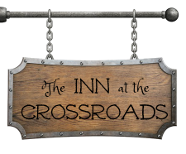Thoughts:
Almond milk was one of the staple ingredients of a medieval kitchen. Often used in place of milk, it was invaluable, particularly on church-proscribed “fish days”, many of which fell during Lent. It’s difficult to even casually flip through a medieval cookbook without finding it listed. Depending on the recipe in which it was required, medieval almond milk was usually made with either wine or a meat broth, but our modern stuff is made with good old palatable water.
So, I thought I would try my hand at Wonderful, and a fun experience. I didn’t have a working food processor when I started this post, so I decided to try making a batch the old fashioned way, with a mortar and pestle.
Let me tell you. I’ve never before so fervently wished for apprentices, upon whom I could foist such a grueling task. It took a long time, and produced only a small amount of almond meal. It worked, but I soon thereafter went out and bought a food processor. I can’t fully recommend the old fashioned method as anything other than an amusing and tiring trip through culinary history, but as to making one’s own almond milk? YES.
I cannot sing high enough praises of this stuff. I thought I didn’t really like almond milk, having only tried the store variety. But this… this is something entirely different. Rich and smooth, it packs a powerhouse of almond flavor. My batch didn’t even require sweetening, it was that good. Friends queued up to try it. Seriously.
So while it might seem like a lot of effort, I encourage you to try it, just once.
Recipe for Almond Milk
Cook’s Notes: I found that straining the mixture through cheesecloth proved easiest, since it allowed me to really wring the liquid from the grounds, which in turn made it easier to dry them for other uses. I also used raw almonds, but would be curious to try it again with roasted.
“28. And again, flans of almond milk: according to the quantity of flans which you are making take the quantity of almonds, have them well and cleanly blanched and washed and then have them very well brayed; and take very clean fair water and let him strain his almond milk into a bowl or a cornue which is fair and clean according to the quantity of flans which he should make….” -Du Fait de Cuisine, 1420
Ingredients:
- 1.5 cups whole raw almonds
- 4 cups of water
In a large bowl, cover the almonds with boiling water. Let sit for around 15 minutes, then strain and rinse with cold water. This should loosen the brown papery skins enough that you can easily remove them. If you like, you can soak the blanched almonds overnight to further soften them, but that’s not strictly necessary. Combine the blanched almonds with 2 cups of water at a time, and blitz in a food processor or blender until the mixture looks like a thick paste. Add the remaining water and process until almonds are ground very fine, and you have a smooth looking puree. Pour this mixture through a fine sieve or cheesecloth, squeezing to bring out as much of the liquid as possible. Taste, and sweeten to your preference, if desired. Voila! Almond milk!
Save and dry the ground almonds for making marzipan (recipe coming soon) or in other baking. It’s great for biscotti, or, my personal Achilles’ heel, French macaroons. Also, that stuff is expensive!


I wish I could have sent you Bartolomeo and his apprentice arms to speed your cause . . . :D
You may already be aware that David Friedman has a book called “To Milk an Almond” ( http://www.daviddfriedman.com/Medieval/To_Milk_an_Almond.pdf , http://www.amazon.com/Milk-Almond-Stuff-Armor-Turnip/dp/1460924983 ). I expected this post to be about that book, or about the source of your recipes.
In any case, I have now seen a reference to non-processed almond milk in two places. I guess it’s time to give it a try.
I use inexpensive, reusable paint strainers, from Home Depot or any hardware store.
This may be a stupid question, but what kind of bottle is the milk in, in the picture? I’ve been looking for a bottle like that but havnt even been able to figure out what to search for on Google to find something similar.